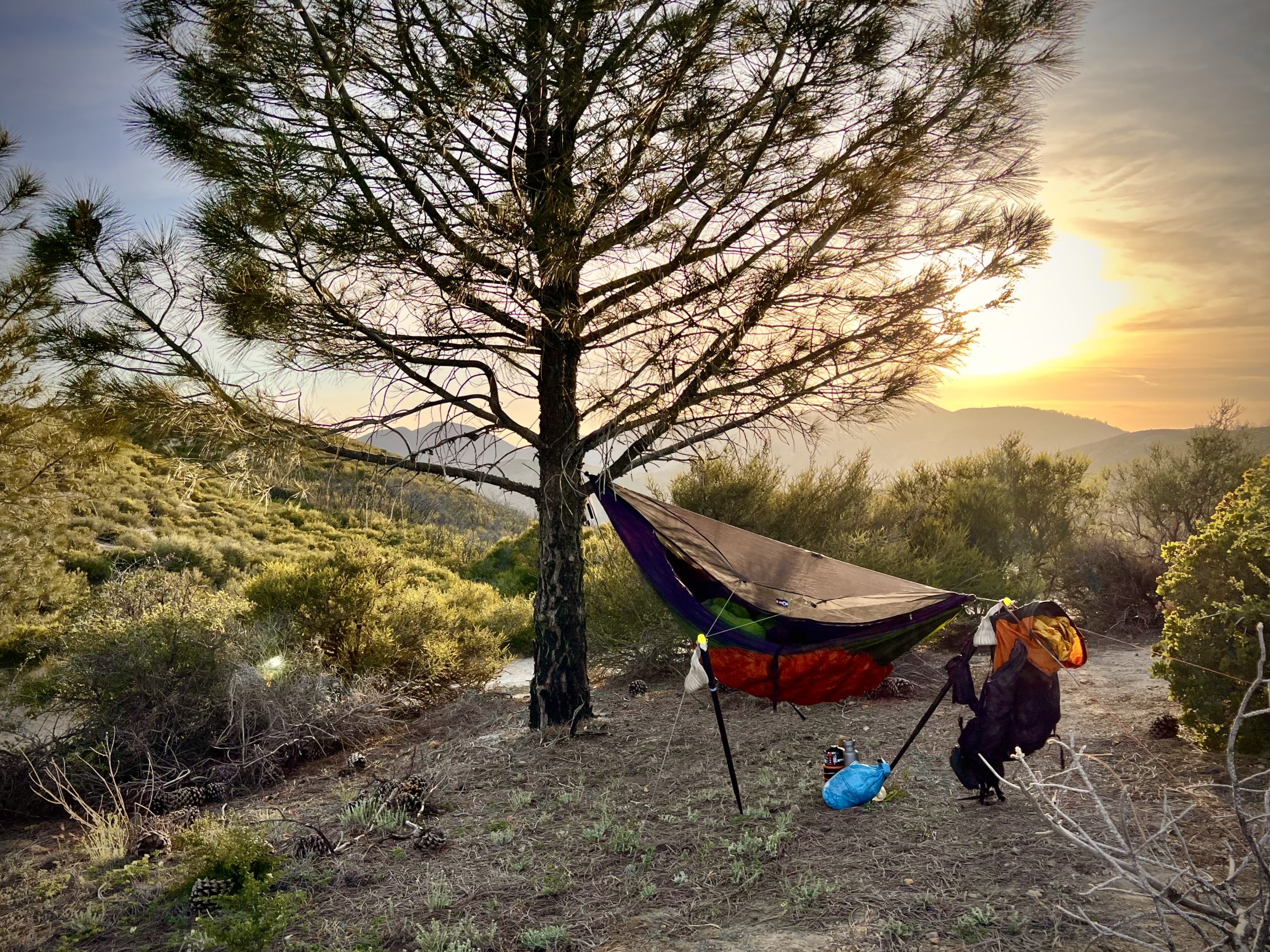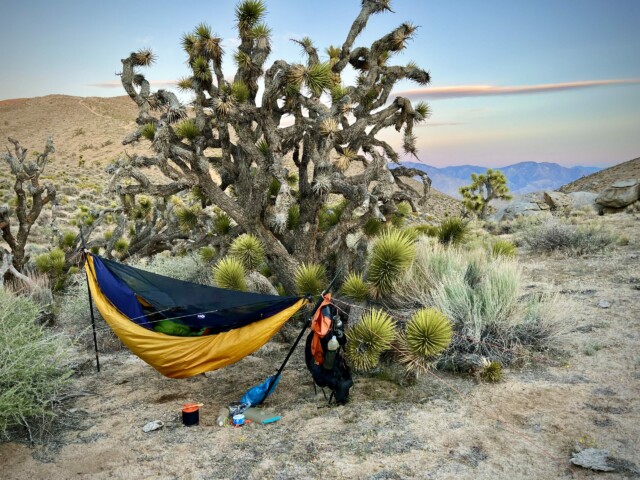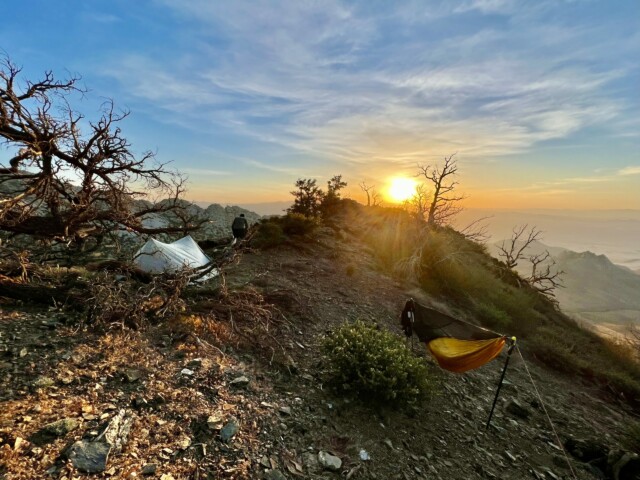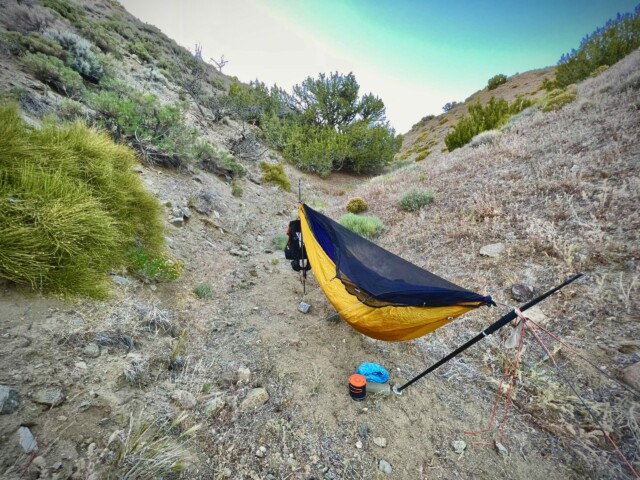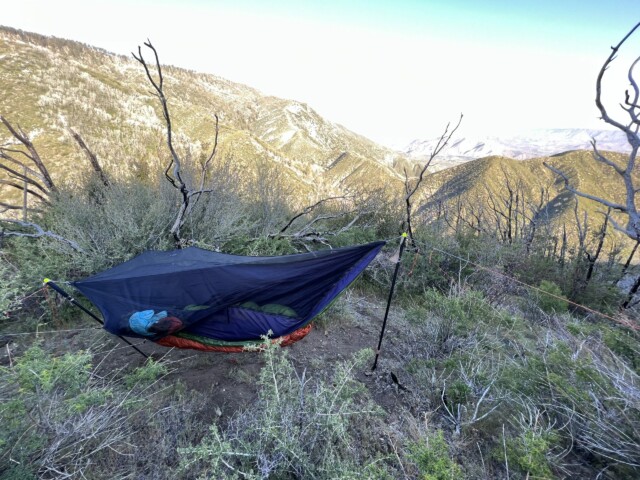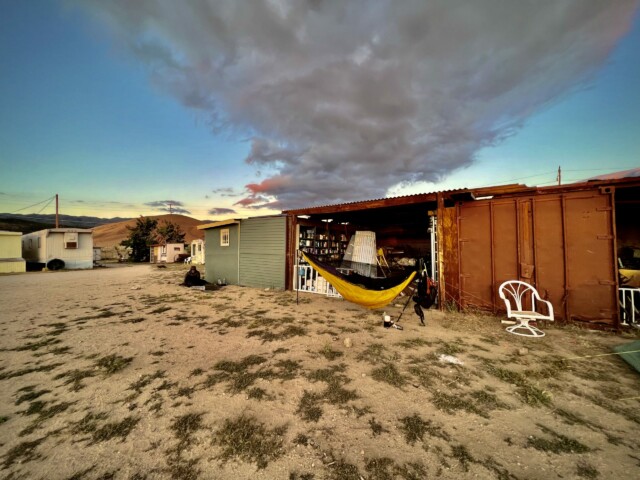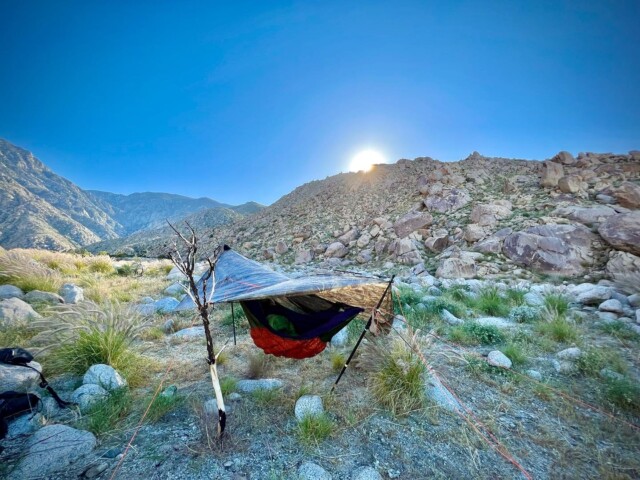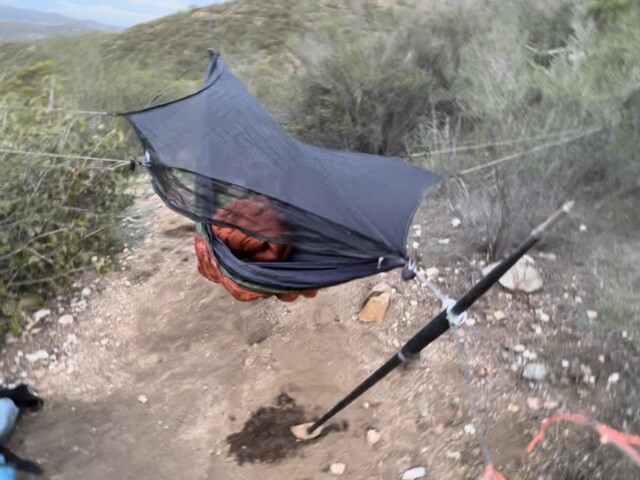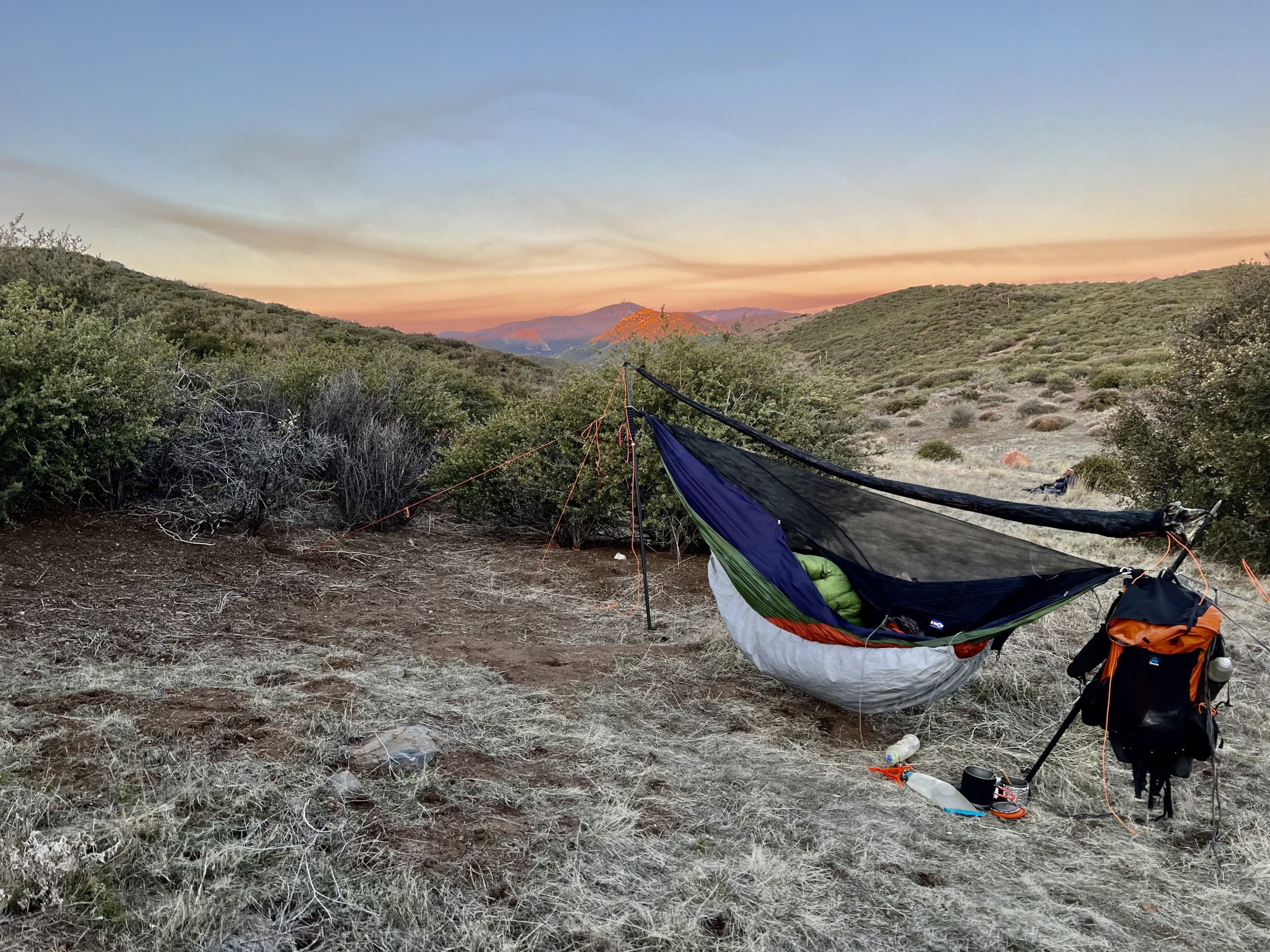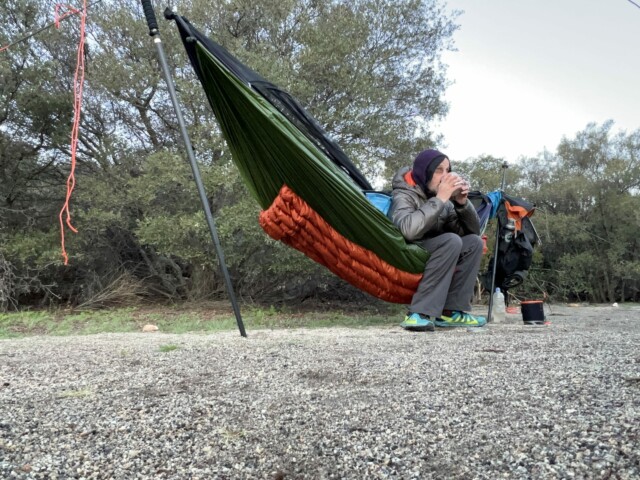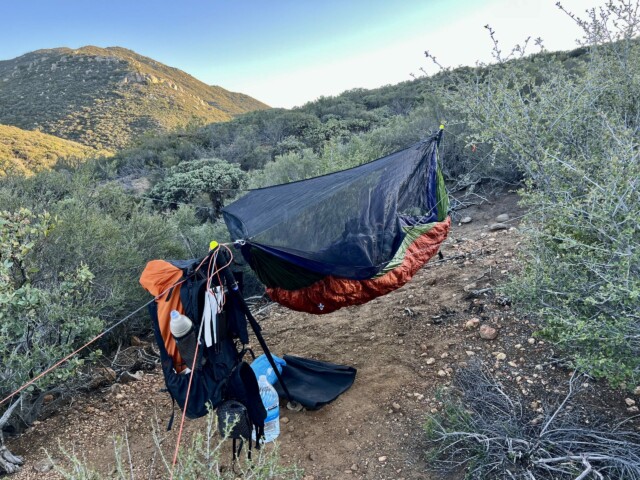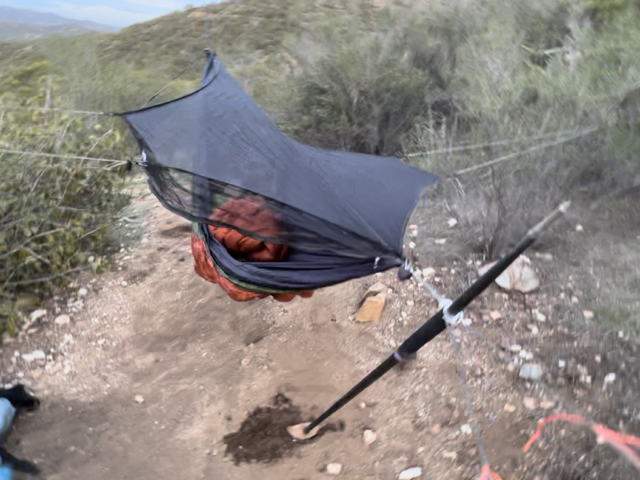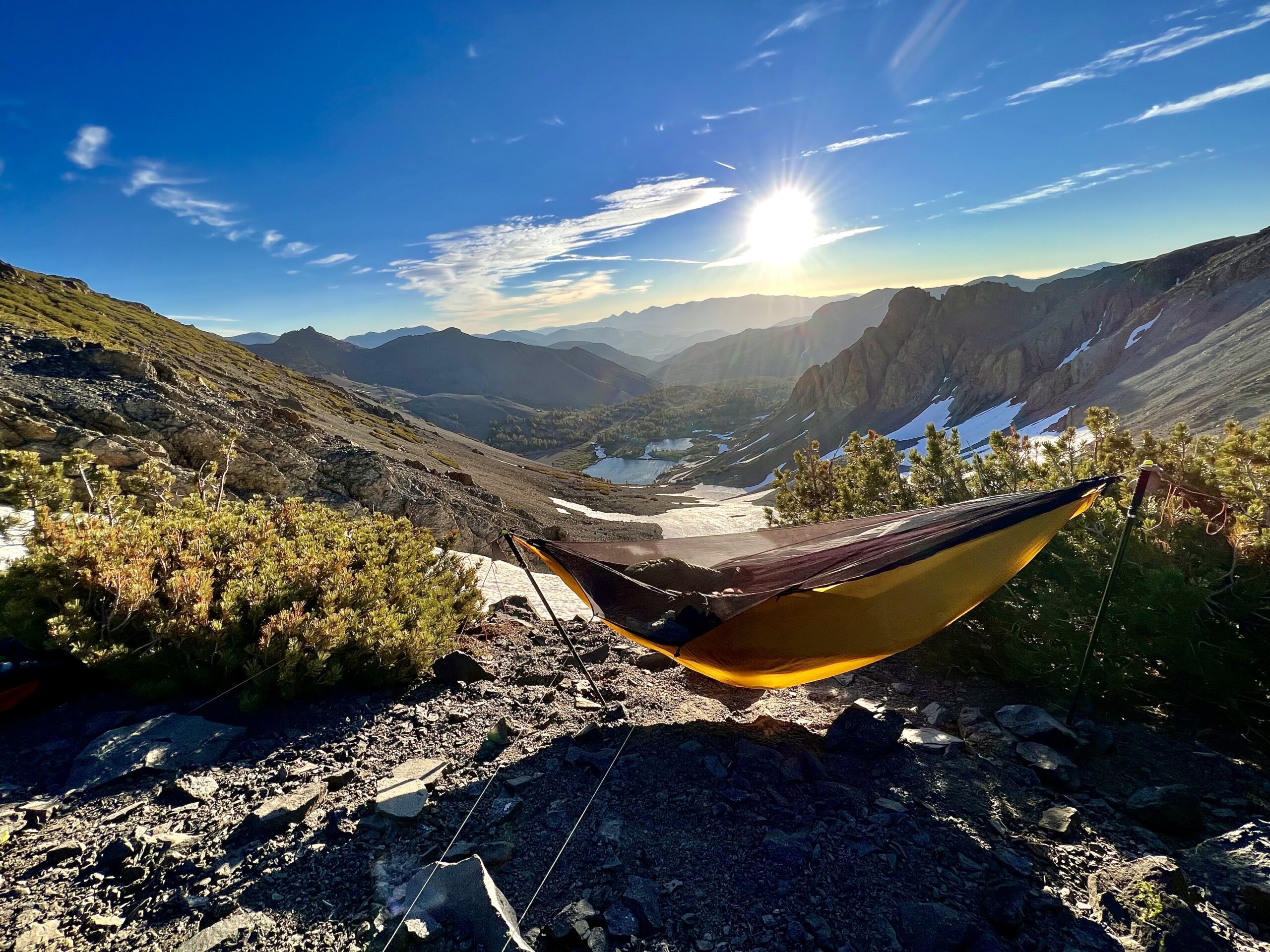
Above is at Sonora Pass, around 10,500′. It was a windy night, but not too cold, and the hammock’s tie-outs kept the sway down. This was the only overnight two-pole hang north of the desert, as trees were usually available. Here I chose to hike past the trees for this morning view, to say nothing of the jaw-dropping sunset. Besides, here on this treeless side of the ridge was the first signal in days. It was a challenging hang, on steep loose scree where no ground-dweller would ever think to camp, but I’d gotten very confident of my Treez skillz by that point.
The end
Thanks to our unique product Trekking Treez, I believe I’m the first PCT hiker to have used only a hammock properly hung through 100% of the “unhammockable” sections of this trail. I thought often of the ancients of Central America who seem to have invented hammocks on this same cordillera in the tropics, long before Columbus, and how this same elegant technology is enjoying a renaissance among hammock campers all over the world. I’m proud to play the smallest part.
I hiked my best hike. I came home to Portland in early July from Dunsmuir, California, in the shadow of magnificent Mt. Shasta, near trail mile 1500 since Mexico. I wrote about all of my hike personally, and my decision to call it short of Canada on my Facebook, if that interests you. I’m still adjusting to life back in the fake world, slowly navigating a shallow depression after so many overwhelmingly beautiful, soul-shaking days stacked on end. I feel hollowed out and grateful. Tender blissful grief. It’s hard to move on from the greatest adventure of my lifetime by far (except maybe parenting, ongoing!).
It’s not always about the hammock: Trekking Treez as hiking poles
I needed Trekking Treez for hammocking only a few times north of the desert. The most unique thing about them is their hammock function, but they also have some unique features as trekking poles.
If I got a nickel for every set of broken poles, or parts of them, that I came across along the way, especially those abandoned in hiker boxes, I would be a few dollars richer. When you read reviews of ultralight trekking poles, you’ll see that a chief complaint is that they break. This is natural for anything super light. Light is nice for obvious reasons, but I wonder how many of the broken poles I found got replaced with something more sturdy?
Trekking Treez weigh about 12 ounces (340g) in hand, each. (There are more parts weighing about the same per pole in the pack.) This is lighter than some well-reviewed aluminum trekking poles on the market. But because they are instead carbon fiber at this relatively high weight, they are likely the strongest trekking poles you can buy. Most manufacturers using carbon fiber use this strong material to strip away every last unnecessary bit of it, resulting in exceptional lightness. We’ve gone the opposite direction, using the least amount of material necessary to produce poles strong enough to support adults in a hammock. As a side effect, they are strong enough to use in ways that would constitute abuse for ordinary trekking poles.
Icy snow
In the deep, steep, crusty snow fields of the high mountains in spring, an ice axe is often essential, especially to arrest falls on fatal icy chutes. Trekking Treez do not replace an ice axe for this specific critical function. The other main use of an ice axe is to plunge through the crust, deep into the snow, and use the head as a hand-hold, to prevent slipping and falling in the first place. TT are brilliant for this. I used them over dozens of hours traversing snowy spring slopes, never worrying that I’d snap one, even when my feet slipped and my whole weight was on the handle.
I had an ice axe with me in the San Jacinto mountains in March, but entering the Sierra Nevada in May, I brought no axe. This felt foolish on some of the hairier north faces of passes around 14,000′, but that also helped me appreciate that I had such stout poles to stab into the ice.
Water crossing
Safety at water crossings, especially whitewater, nearly requires poles. Hopping from polished rock to rock, or teetering on logs slick and shaky, it’s vital to plant the carbide tips onto the rocks above and below the surface for balance. The more weight you can safely transfer to the poles, the more confidently you cross. And if your tip slips down an underwater chuckhole, and you torque it falling, will it snap? TT aren’t indestructible, but I soon came to rely on them in ways I wouldn’t dare treat ordinary poles, even to vault across larger gaps with no run-up. I became proud of crossing a dozen or more fast streams daily without getting my shoes wet, Parkour-style, where hikers with normal poles would opt to ford, more slowly and with different hazards.
Super long reach
By the time I reached Yosemite, I had embraced another unique feature: their extra length. In normal hiking mode, the poles offer a typical range of height adjustment. But we offer pole extensions for hammock mode, because the foot end must be higher than any normal trekking pole. There’s no reason not to use hammock mode for other purposes, however. At maximum length, TT has the grips at a whopping 63″ (160cm)! I wish I had video of me gondola-ing across a harrowing high log over whitewater, where I used both poles fully extended for stability. We could rename “hammock mode” to gondolier or even trapeze mode. True gymnasts will love our poles even if they don’t hammock. I suppose John Muir would have chopped down saplings at these crossings, that today would violate Leave No Trace. Yes, we called them Treez for their hammock function, but there are many more uses of tree-like poles than hanging hammocks.
Who needs separate tarp poles?
I often hung my hammock between trees on steep slopes. Once, a chance of rain meant I pitched my tarp. The ground falling away downslope meant the tarp would block the view unless I could prop it up. Again, normal trekking poles would have been far too short for this. TT maxed out were just right.
A hiking staff by any other name
A cousin of trekking poles is the hiking staff. Carried singly instead of in pairs, hiking staffs are taller and heavier than trekking poles, meant to bear a user’s whole weight safely as needed. TT fits this bill perfectly when the tall hammock foot is installed. Admittedly, we haven’t tested how durable the hammock foot (as opposed to the carbide trekking tip) is when used over long distances, but on softer surfaces it should hold up pretty well, certainly better than hiking with the rubber tips covering the carbide. (Those feet fall off and get lost really fast; their best use is just to protect other items from the sharp carbide tips when the poles are packed.)
Actually innovative straps
Another feature of TT, unique in a market of barely distinct strap and grip assemblies picked from large factory catalogs, are the hand straps. It’s hard to get excited about straps, but these are special, developed just in time for my hike as a hard test. I made a video about how our ultra-wide, ultra-soft Ultrasuede straps replace sun gloves, sweat mops, and snot rags, and also encourage good technique by supporting your whole hands comfortably, so you don’t feel need to grip the grips, interfering with their free pendular motion. I forgot to mention in the video that adjusting the straps extra long, so you can hold the poles with only 2 fingers below the grips, reduces the swing weight of the poles. This makes them feel lighter in use than they are.
Make with the photos already
For the sake of a complete accounting, below are all instances where I used TT to hang my hammock in the Sierra and Northern California sections of the PCT.
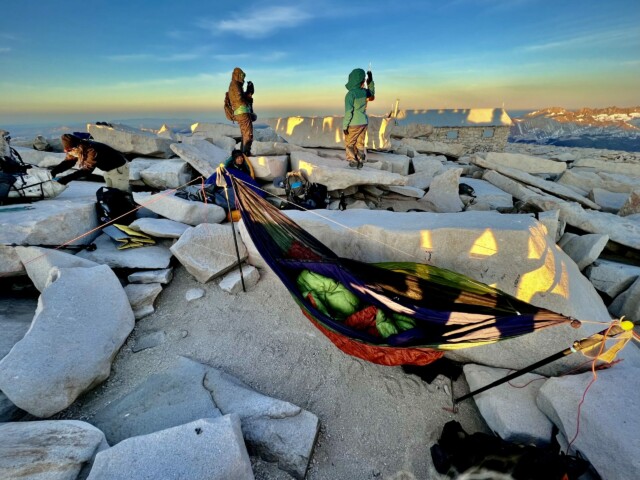
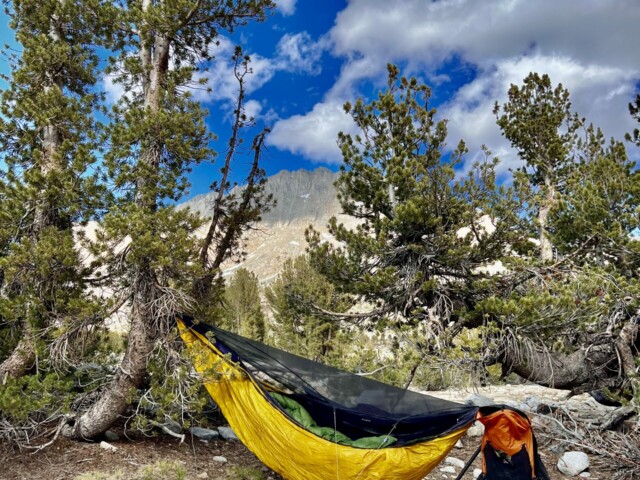
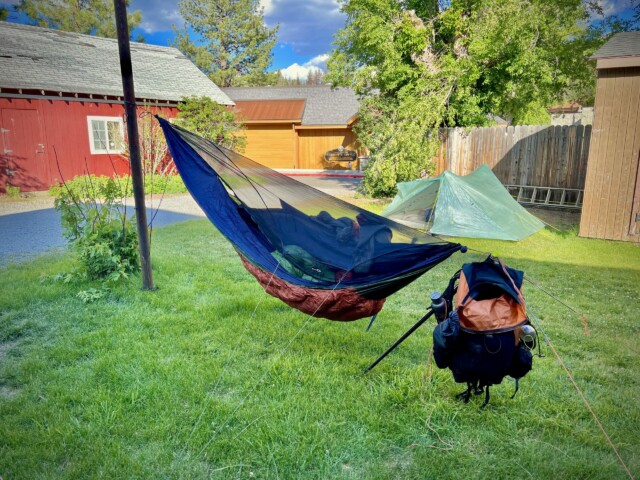
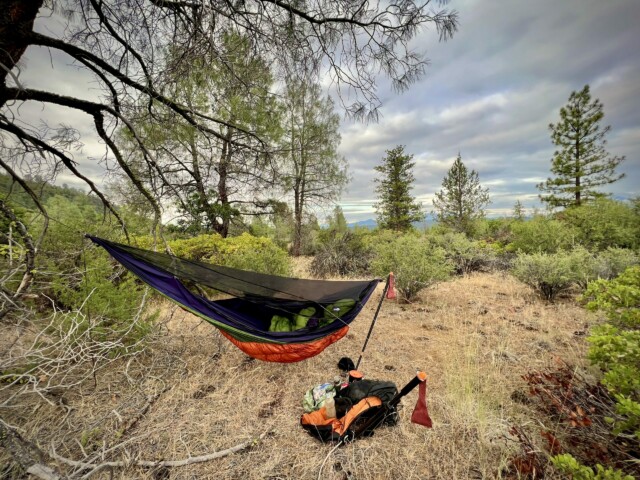
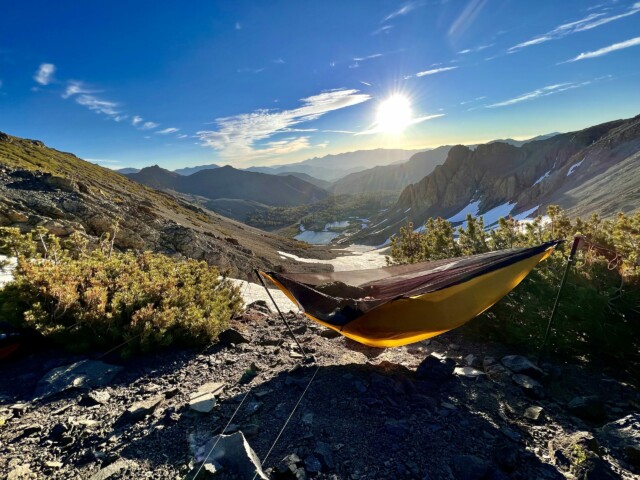
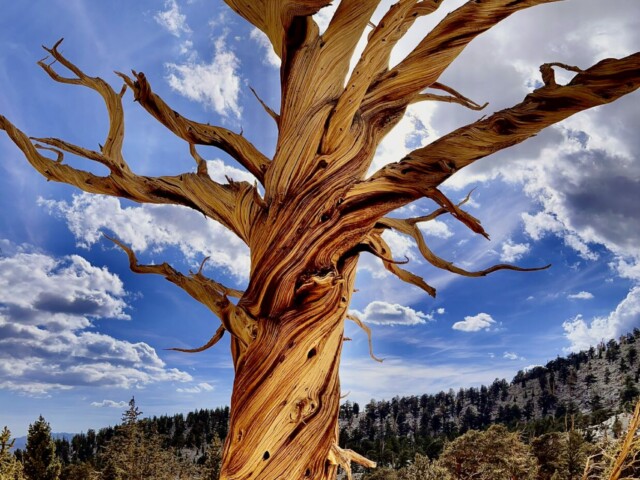
Just land here? This is the last of a three-part series.






